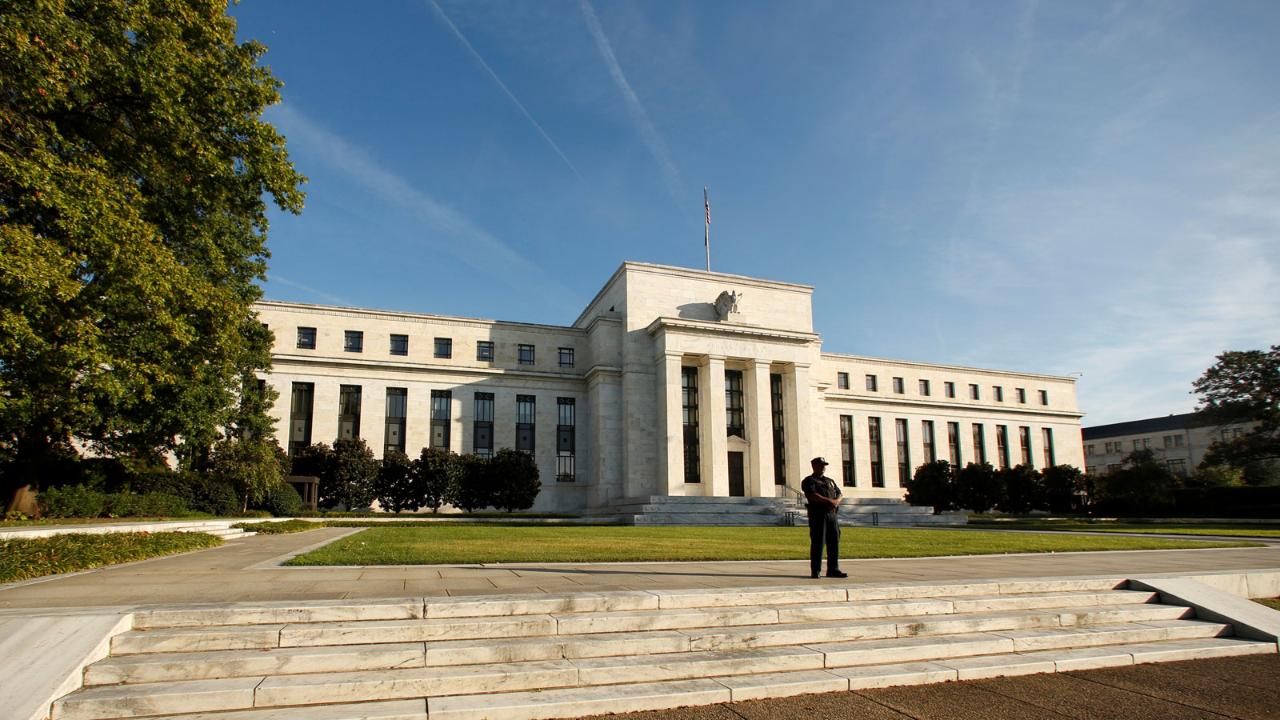Federal Reserve leaves rates unchanged
How will the Fed shape the markets?
Investors are turning their attention to this week’s Federal Reserve policy meeting. How will the markets react? TrendMacro CIO Donald Luskin and Erin Gibbs of S&P Investment Advisory Services with more.
The Federal Reserve left rates unchanged at the end of its two-day meeting on Wednesday, its first of the year. The move was widely expected after signaling a dovish approach in 2019 during their December policy meeting.
U.S. stocks maintained their gains following the announcement and ahead of Fed Chairman Powell's planned remarks, followed by questions from journalists, starting at 2:30 pm ET.
| Ticker | Security | Last | Change | Change % |
|---|---|---|---|---|
| I:DJI | DOW JONES AVERAGES | 44782 | -128.65 | -0.29% |
| SP500 | S&P 500 | 6047.15 | +14.77 | +0.24% |
| I:COMP | NASDAQ COMPOSITE INDEX | 19403.947849 | +185.78 | +0.97% |
And according to a research note from IPL Financial Research, the Fed fund futures are estimating about a 70 percent probability that the Fed will keep rates unchanged for the entirety of 2019 amid concerns of softening economic growth.
"While we expect one or two more hikes this cycle, there is a possibility that the Fed’s December hike was its last, which will likely cap short-term rates," the note said.
At the beginning of January, Fed Chair Jerome Powell acknowledged investor concerns about a volatile stock market, saying that policymakers were closely watching the economy for signals of a potential economic slowdown. That sentiment has been echoed by other Fed presidents, who have preached patience in the approach to monetary policy in the year ahead.
"We’ve been willing to revisit our views, very much willing to revisit our views, of what the natural rate is, and also our understanding of what it is," he said during an interview in Atlanta.
In mid-December, the Federal Open Market Committee voted to raise interest rates for the fourth and final time in 2018, even as President Trump urged them to "feel the markets." At the time, Powell said there was a "fairly high degree of uncertainty" about the future of further rate hikes, but not that rates have effectively arrived at the lower-end range of neutral.
Fed officials are also moving closer to a decision about ending the sales of bonds it’s holding on its balance sheet, according to a report from The Wall Street Journal. Although officials are still hashing out specific strategy details, planning for the bond portfolio could become the main focus at the FOMC meeting, the Journal reported.
CLICK HERE TO GET THE FOX BUSINESS APP
In 2017, the Fed began to shrink its $4.5 trillion holdings of bonds and other assets, known as its balance sheet, which was expanded during the financial crisis as a way to inject cash into struggling commercial banks. With an unprecedented amount of bonds holdings, the Fed was able to push down long-interest interest rates.
Although they initially indicated the process could take years -- the balance sheet has since decreased to $4.01 trillion -- the latest discussions suggest the runoff could end much quicker than originally anticipated.

